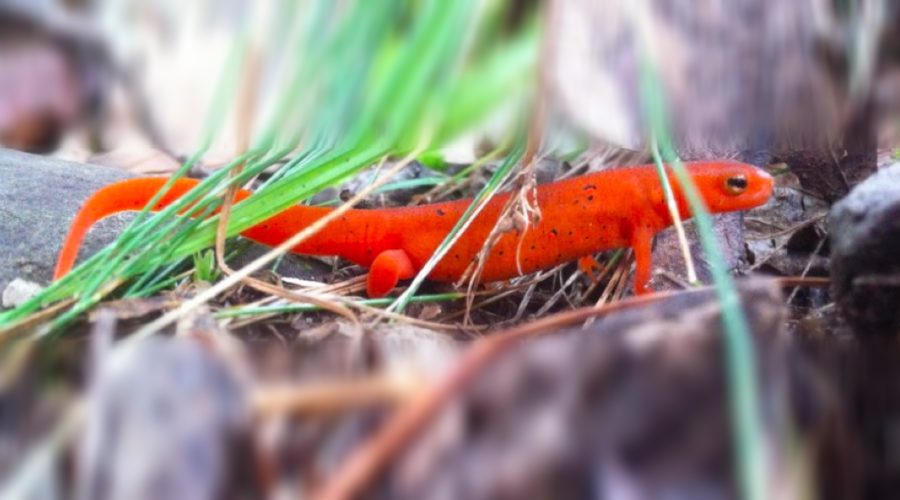Salamander Study
A walk in the woods this time of year can yield many finds, including one brightly colored local treasure: the red eft. The red eft is the terrestrial stage of the red-spotted newt, or notophthalmus viridescens viridescens. Most often seen after a period of rain, sheltering under leaves, mushrooms and other shady spots, these creatures serve an important role in the ecology of the Eastern US.
With their non-discretionary appetites, these tiny carnivores, in all of their stages, eat insects, snails, and anything else they can fit in their tiny mouths, collectively reducing the invertebrate population of the areas in which they reside. Efts act as one of the natural checks and balances of our native ecosystem, for example preventing the spread of disease that would result from the overpopulation of invertebrates.
Red-spotted newts, a subspecies of the Eastern newt, begin their lives as completely aquatic larvae, or tiny newts with external, feathery gills. Less than 2% will go on to develop into the bright orangey-red eft, a terrestrial form with not only bright red body, but deeper red spots ringed in black along their backs. Known as “aposematism”, their bright red bodies are a visual warning to potential predators that signals these newts as poisonous. Indeed, red-spotted newts can secret a toxin harmless to humans but dangerous to potential fish and bird predators. Although harmless, they can carry strains of the salmonella bacteria, so washing of hands after handling one is advised.
Newts, as with all salamanders, breath and absorb through their skin, so should you encounter an eft, do not touch it if you have used bug spray or sunblock, as it could potentially harm the animal.
After a period of 2-3 years, the wandering eft will find a new water body to mature into a fully grown, mostly-aquatic newt. Though the body will turn green and yellow, the adult newts retain their black-outlined red spots, and their tails flatten into a spearhead shape. The average lifespan of a red-spotted newt is a surprising 12-15 years in captivity, but in the wild, fish, birds and leeches all prey on them, despite their toxicity.
These amazing little animals can wander through coniferous and deciduous forests, survive short droughts, and there is even evidence that they can home in on their home ponds through light sensitive magnetic homing. These are truly small wonders wandering through our forests! (Author: Sara Pace)

